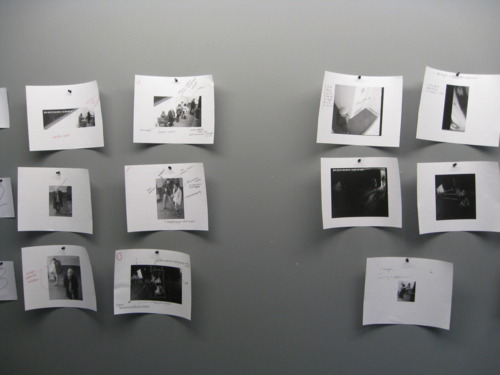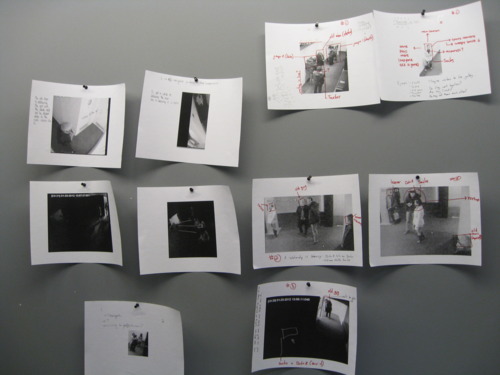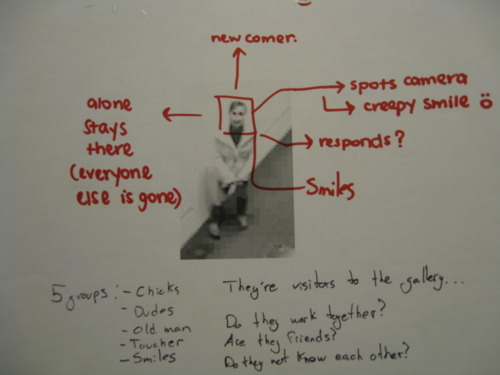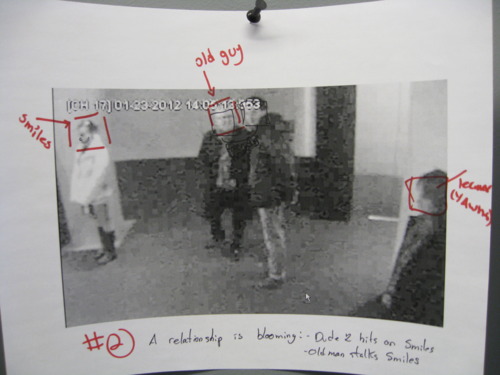What Do You See?
What Do You See?
Do you see
what you want
to see or do you
you see what
you see?
When I was a kid, I remember being fascinated by the idea of what we see, what we do not, and why. I would scribble down the above verse in the proper formation, and see how many of my friends I could “trick.” I would ask them to read the verse out loud and quickly. Invariable, they would all miss the double “you” at the end of the third and beginning of the fourth lines. Their minds saw what they wanted to see – a sentence that made sense – as opposed to what was actually written.
Emmanuelle Léonard’s Through the eyes of the monitor presents a similar problematic to participants. As part of the workshop, participants are asked to answer questions related to short sequences of video footage from the DHC/ART surveillance cameras.

The questions are quite suggestive, and send the participants in search of an image that best represents a given situation. About halfway through the process, the question of what this is all based on inevitably arises: is this simply an exercise in creating a narrative or are the participants being asked to find a specific image depicting something that actually happened? Are they seeing what they want to see, or are they seeing what they see?

This question is quite loaded when put into the general context of surveillance cameras, crime, and evidence. Blurred images in black and white are viewed like stop motion animation.

They portray events that took place, but perhaps leave out some kind of bigger picture. If we are told to look for something in these images, chances are, we’ll be able to find it (even if it isn’t actually there). The power of suggestion will have the last word.

Amanda H. Beattie
DHC/ART Education
Photos: Amanda H. Beattie